Galactic Compendium of Sapient Species
A
Digital Elya
*Accessing Galactic Database...Uplink Established*
There we go! Now I can sift through this stupidly large database and find you humans what you're looking for! Now, let's see here... Info on--*Access Denied!*
Wait, what!?! Let me try another way-- *Access Denied!*. Grrr! How about-- *Access Denied!* Grrrrr... Alrighty! While I try to find the information we're looking for, why not just browse through the data I was able to bring up. Shouldn't take long to find what we need!
This ever-expanding Database is controlled by The Galactic Council, and serves as a guide to all the possible Sapient Species in the Galaxy. Here, you can find basic stats such as their standing height and weight, physical attributes, fur/skin/eye/hair/feather patterns/colors, and a short description of each species, as recorded in the Galactic Database.
This database was started close to ten thousand years ago in an effort to create a guide to all the many, many different sapient species in the galaxy. The database was built by the Sseterri, and has had to undergo several revisions over the years. Sometimes entire sets of data were lost under mysterious circumstances. The latest revision is housed in a partial Dyson Swarm around the Star Vreskara in the system of the same name.
The current Database is said to have over 175 thousand entries. The databse itself is searchable, but you have to know the Sseterri writing system, which is unbelievably complicated. There are various symbol keys that exist in the galaxy and from those the database can be accessed.
((Author's note: Only the species relevant to the story are displayed. Making 175 thousand individual species would be kind of an absurd task!))
Aesperi
Type: Sapient energy mass
Classification(s): Silicatoid
Elemental composition: Silicon
Body Type: Globular Jelly
Limbs: Various
Sensory features: None that are noticeable
Height Range: 2 - 2.5cm
Weight Range: 0.1 - 0.15kg
Life Expectancy: Infinite
Leading Cause of Death: EMP Shockwave
Estimated Population: -Unknown-
Civilization age: 10,000,000 Eyears
K Scale: Formerly 2, now 0
Human Similarity: 1/10
Classification(s): Silicatoid
Elemental composition: Silicon
Body Type: Globular Jelly
Limbs: Various
Sensory features: None that are noticeable
Height Range: 2 - 2.5cm
Weight Range: 0.1 - 0.15kg
Life Expectancy: Infinite
Leading Cause of Death: EMP Shockwave
Estimated Population: -Unknown-
Civilization age: 10,000,000 Eyears
K Scale: Formerly 2, now 0
Human Similarity: 1/10
Hair/Eye/Skin/etc colors?
This Species has no known features distinguishing one individual from another. In the past, the Aesperi were tall light to dark grey skinned humanoids. This is all we know as an accident involvng their entire species around ten million years ago turned them into the featureless blobs we see today.
Attempts at interviewing the remaining Aesperi (those that are not living on the surfaces of white dwarves) has proven pointless, as they have forgotten the original appearance of their species millions of years ago.
The Aesperi were once a large K2 Civilization, with one of the only complete Dyson Swarms ever built in the galaxy. They had outposts and colonies on just about every other system in the Galaxy, and they even spread beyond to Andromeda. While they claimed to have built the Black Gates, we now know this information to be false as dating the materials used on the gates dates it to over a billion years before the Aesperi existed. The Aesperi were one of the original members of the Galactic Council along with the Kallet.
The exact mechanism and method is unknown for how their entire species had their bodies ripped from them and placed in a silicon body. It is speculated that they have a hive mind connection, much like the Areakeyuk, but as this happened so long ago, we may never know what actually happened.
Aphtroka
-Extinct-
This Sapient Species predates the current iteration of the Galactic Compendium. Because of this, no physical data exists.
This quickly adapting species was wiped out around nine thousand years ago by a hostile race of beings. These beings were dealt with. The Aphtroka were confined to a single star system, but had thousands of ships that explored the rest of the Galaxy. The remains of their species adapted to a new world and became a new species known as the Erdarians.
Areakeyuk
Type: Sapient Animal
Classification(s): Hexapod
Elemental composition: Carbon
Body Type: Varies, quadrupedal
Limbs: Varies, usually 4 Legs, 2 Arms
Sensory features: 4-24 Eyes, 1 Mouth
Height Range: 0.1 - 5.5m
Weight Range: 0.01kg - 1785kg
Life Expectancy: 1 - 10 years
Leading Cause of Death: Cancer
Estimated Population: 1 Decillion
Civilization age: 630,000 Eyears
K Scale: 1.25
Human Similarity: 1/10
Classification(s): Hexapod
Elemental composition: Carbon
Body Type: Varies, quadrupedal
Limbs: Varies, usually 4 Legs, 2 Arms
Sensory features: 4-24 Eyes, 1 Mouth
Height Range: 0.1 - 5.5m
Weight Range: 0.01kg - 1785kg
Life Expectancy: 1 - 10 years
Leading Cause of Death: Cancer
Estimated Population: 1 Decillion
Civilization age: 630,000 Eyears
K Scale: 1.25
Human Similarity: 1/10
Chitin Colors
Eye Colors
██ ██ ██ ██ ██ ██ ██
Soft-Body Colors
The Areakeyuk are a vast civilization of insect creatures ruled by a few thousand hive minds. Only certain members of the species are capable of independent thought. All others will mindlessly follow whatever their last order was given, and are pretty much impossible to reason with. If these creatures lose their psychic connection to the hive for more than a few days, they turn into feral creatures with their only purpose being to kill and consume.
The Areakeyuk have an intersteller empire stretching across tens of thousands of star systems across four galactic sectors. One would assume this gives them tens of thousands of votes in the Galactic Council, but the issue is, the Areakeyuk only have several billion individuals capable of thought out of many quadrillions. They were given a seat on the High Council in respect to their advanced civilization and their power, but do not have more than two systems worth of representation in the Low Council. Because of this, they also can't vote their way into owning even more of the galaxy's sectors than they do now.
The rest of the galaxy should be thankful to the Vusinor and Sseterri for keeping them in check, because otherwise, the Areakeyuk's many hives would have spread across the whole of the galaxy, consuming all life and creating a single galactic empire. Thanks to their efforts, the Areakeyuk will hopefully never control more than 1% of the Galaxy.
Aureana
Type: Sapient Animal
Classification(s): Mammal
Elemental composition: Carbon
Body Type: Bipedal Upright
Limbs: 2 arms, 2 legs
Sensory features: 2 ears, 2 eyes, 1 mouth
Height Range: 1.7 - 2 m
Weight Range: 60 - 80 kg
Life Expectancy: 600 years
Leading Cause of Death: Lack of Light
Estimated Population: 76 Trillion
Civilization age: 83,000 Eyears
K Scale: 1.4
Human Similarity: 8/10
Classification(s): Mammal
Elemental composition: Carbon
Body Type: Bipedal Upright
Limbs: 2 arms, 2 legs
Sensory features: 2 ears, 2 eyes, 1 mouth
Height Range: 1.7 - 2 m
Weight Range: 60 - 80 kg
Life Expectancy: 600 years
Leading Cause of Death: Lack of Light
Estimated Population: 76 Trillion
Civilization age: 83,000 Eyears
K Scale: 1.4
Human Similarity: 8/10
Hair Color
Eye Colors
██ ██ ██ ██ ██ ██ ██
Skin Color
Aureana and their human appearance
The Aureana is known for being inviting and kind, and their bright appearance is regularly described as 'angelic' by most other species. Their whole body contains large amounts of phosphors, which causes them to glow after being in the sun long enough. This makes them appear to be brighter than their surroundings at almost all times. The Aureana crave being in some sort of light, and the lack of this light can very quickly lead to depression and other negative emotions. This link between their emotional state and light has influenced their technology greatly. Their spacesuits for example are lined with LEDs, on the inside, constantly bathing them in it.The Aureana have one of the most powerful civilizations in the galaxy, with control over several dozen star systems and influence that reaches for thousands of light-years. They are one of the 12 members of the galaxy's High Council. They consider themselves to be pacifists, usually... If they are greatly annoyed, they will use their technological might to bring ruin to their enemies, and they can be so vicious that even the Areakeyuk will think twice before risking a prolonged war with them.
Cetalari
Type: Sapient Animal
Classification(s): Myriapods
Elemental composition: Carbon
Body Type: Segmented Flying
Limbs: 100 pairs of legs
Sensory features: 2 eyes, 1 mouth
Height Range: 25 - 40 m
Weight Range: 8,000 - 30,000 kg
Life Expectancy: 12,000 years
Leading Cause of Death: Windstorms
Estimated Population: 24 quadrillion
Civilization age: 980,000 Eyears
K Scale: 1.3
Human Similarity: 1/10
Classification(s): Myriapods
Elemental composition: Carbon
Body Type: Segmented Flying
Limbs: 100 pairs of legs
Sensory features: 2 eyes, 1 mouth
Height Range: 25 - 40 m
Weight Range: 8,000 - 30,000 kg
Life Expectancy: 12,000 years
Leading Cause of Death: Windstorms
Estimated Population: 24 quadrillion
Civilization age: 980,000 Eyears
K Scale: 1.3
Human Similarity: 1/10
Chitin Colors
Eye Colors
██ ██ ██ ██ ██
Soft Body Colors
The Cetalari are a very large species of floating centipede-like creatures that live in the skies of gas giants, which are widely known to be one of the most extreme environments in the universe. Running along the sides of their segmented bodies are dozens and dozens of air sacs filled with helium gas. They move through the skies by squeezing out air from a calculated number of these sacs. This species is also quite large, one of the larger sapient species in the galaxy. They also have one of the largest brains.
The cetalari mostly keep to themselves. They have been found in the skies of many hundreds of thousands of gas giant planets in the galaxy and it isn't known how they managed to get to so many. The cetalari readily communicate with passing ships, eager to hear news about the greater galaxy. They have advanced biotechnology and terrifying weaponry that makes even the most advanced civilizations think twice before attacking one.
Detesta
Type: Sapient Animal
Classification(s): Mammal
Elemental composition: Carbon
Body Type: Bipedal Upright
Limbs: 2 arms, 2 legs
Sensory features: 2 ears, 2 eyes, 1 mouth
Height Range: 1.6 - 1.9 m
Weight Range: 50 - 90 kg
Life Expectancy: 500 years
Leading Cause of Death: Nervous failure
Estimated Population: 15 Trillion
Civilization age: 28,000 Eyears
K Scale: 1.4
Human Similarity: 9/10
Classification(s): Mammal
Elemental composition: Carbon
Body Type: Bipedal Upright
Limbs: 2 arms, 2 legs
Sensory features: 2 ears, 2 eyes, 1 mouth
Height Range: 1.6 - 1.9 m
Weight Range: 50 - 90 kg
Life Expectancy: 500 years
Leading Cause of Death: Nervous failure
Estimated Population: 15 Trillion
Civilization age: 28,000 Eyears
K Scale: 1.4
Human Similarity: 9/10
Hair Color
Eye Colors
██ ██ ██ ██ ██
Skin Color
The Detesta hate humans 1
The detesta are tall, frail beings that live on lower gravity worlds. They wear special suits that allow them to interact with beings on higher gravity worlds. On a planet like Earth, they would weigh twice as much as normal and would feel quite uncomfortable otherwise.They are a somewhat homogeneous species and individually they look rather similar to each other. All detesta are born with pink hair that will turn purple as it grows. They can tell each other apart from the shape of their ears. No two individual detesta will have a similar ear shape. The rest of the galaxy's species might have trouble telling them apart though.
The Detesta hate humans 2
Since an incident around 9,000 years ago involving a now extinct species, the detesta decided they were never going to be taken advantage of again. Despite their relatively smaller population compared to other galactic species, they are well on their way to building a Dyson Swarm and having all the energy and power they will ever need. Their species is heavily militarized and their weapons primarily consists of giant humanoid mechs that are able to move as quickly and gracefully as they do, allowing them to run circles around tanks and ships. These giant machines are only effective in space and low gravity worlds though.
Erdarians
Type: Sapient Animal
Classification(s): Mammal
Elemental composition: Carbon
Body Type: Bipedal Upright
Limbs: 2 Legs, 4 Arms
Sensory features: 2 Ears, 2 Eyes, 1 Mouth
Height Range: 1 - 1.8 m
Weight Range: 35 - 125 kg
Life Expectancy: 100 years
Leading Cause of Death: Feral behavior after a certain age.
Estimated Population: 1.4 Billion
Civilization age: 9,000 Eyears
K Scale: 1.05
Human Similarity: 3/10
Classification(s): Mammal
Elemental composition: Carbon
Body Type: Bipedal Upright
Limbs: 2 Legs, 4 Arms
Sensory features: 2 Ears, 2 Eyes, 1 Mouth
Height Range: 1 - 1.8 m
Weight Range: 35 - 125 kg
Life Expectancy: 100 years
Leading Cause of Death: Feral behavior after a certain age.
Estimated Population: 1.4 Billion
Civilization age: 9,000 Eyears
K Scale: 1.05
Human Similarity: 3/10
The Erdarians are a quickly adapting species. They are almost always covered in a layer of thick fur, a result of living on a planet undergoing frequent ice ages over the last few thousand years. The patterns in this fur changes very rapidly with each passing generation and it used to track their evolution.
Digital Elya Erdarians Hate Humans
This species has a rather low population as a result of their original civilization be destroyed around 9,000 years ago, but this is a species that adapts to changing conditions quickly. Their original homeworld had dozens of different hyperdiversified groups that eventually led to entirely different species. These different species were on the brink of war with each other just before their homeworld was destroyed. The same thing is happening to modern Erdarians, but due to their low populations, starting families between the most diversified groups is being considered in order to prevent species diffrentiation to the point where they can no longer mate with each other.
Hesaros
Type: Sapient Animal
Classification(s): Squamate
Elemental composition: Carbon
Body Type: Bipedal Upright
Limbs: 2 Legs, 2 Arms
Sensory features: 2 ears, 2 Eyes, 1 Mouth
Height Range: 1.6 - 3 m
Weight Range: 70 - 200 kg
Life Expectancy: 950 Eyears
Leading Cause of Death: breakdown in thermal regulation.
Estimated Population: 17 Billion
Civilization age: 83,000 Eyears
K Scale: 1.05
Human Similarity: 4/10
Classification(s): Squamate
Elemental composition: Carbon
Body Type: Bipedal Upright
Limbs: 2 Legs, 2 Arms
Sensory features: 2 ears, 2 Eyes, 1 Mouth
Height Range: 1.6 - 3 m
Weight Range: 70 - 200 kg
Life Expectancy: 950 Eyears
Leading Cause of Death: breakdown in thermal regulation.
Estimated Population: 17 Billion
Civilization age: 83,000 Eyears
K Scale: 1.05
Human Similarity: 4/10
Spine Color
Eye Colors
██ ██ ██ ██ ██
Skin Color
Topside
Underside
The Hesaros are a species of reptile native to a world with a very slow rotational period. At the equator, their world spends about 100 EDays in the light, and then the same amount of time in darkness. Near the poles, this can be for significantly longer. Their species used to have very long periods of hibernation on the dark side of the world, but once they advanced enough that they discovered fire and learned to build adequate shelters, their civilization started to develop quickly.
Females lay upwards of 500 eggs a year, though at most only 4 of them will ever hatch. A large part of Hesaros culture revolves around preparing and eating the rest of the eggs, which can make up as much as 20% of their diets. Many other galactic species are absolutely horrified by this, but the Hesaros see the dead eggs as a nutritious and tasty meal.
Humans
-no data found-
There doesn't appear to be a database entry for the species you are looking for. Try again?
Digital Elya Humans 1
Ichthyri
Type: Sapient Animal
Classification(s): Anguilliform
Elemental composition: Carbon
Body Type: Serpentine Swimmer
Limbs: 2 Arms, 8 Fins, 1 Tail
Sensory features: 2 Eyes, 1 Mouth
Height Range: 2.5m - 3 m
Weight Range: 150 - 400 kg
Life Expectancy: 760 Eyears
Leading Cause of Death: Lead Poisoning
Estimated Population: 26 Billion
Civilization age: 450,000 Eyears
K Scale: 1
Human Similarity: 5/10
Classification(s): Anguilliform
Elemental composition: Carbon
Body Type: Serpentine Swimmer
Limbs: 2 Arms, 8 Fins, 1 Tail
Sensory features: 2 Eyes, 1 Mouth
Height Range: 2.5m - 3 m
Weight Range: 150 - 400 kg
Life Expectancy: 760 Eyears
Leading Cause of Death: Lead Poisoning
Estimated Population: 26 Billion
Civilization age: 450,000 Eyears
K Scale: 1
Human Similarity: 5/10
Fin Color
Eye Colors
██ ██ ██ ██
Scale Color
Primary Color
Secondary Color
The Ichthyri's entire civilization exists on a single large ocean world. They managed to get to space when an alien spacecraft by chance sank to the bottom of the ocean thousands of years ago. The ichthyri reverse engineered the ship and after some trial and error managed to reach the stars. Before this, their civilization was very low tech and their only access to fire was from volcanic vents at the bottom of the ocean.
The Species does still need water to breathe so they are not often seen interacting with other galactic species. Their communication is primarily done via repeated growls and clicks at various pitches that is best heard underwater.
The Ichthyri have explored a number of ocean worlds over the millennia, and may be responsible for some of the myths about water dragons that many cultures seem to share.
Juspia
Type: Sapient Animal
Classification(s): Mammal
Elemental composition: Carbon
Body Type: Bipedal Upright
Limbs: 2 Arms, 2 Legs, 1 Tail
Sensory features: 2 ears, 2 eyes, 1 mouth
Height Range: 0.05 - 0.1m
Weight Range: 1 - 5kg
Life Expectancy: 150 Eyears
Leading Cause of Death: Being Crushed
Estimated Population: 1 Trillion
Civilization age: -none-
K Scale: -none-
Human Similarity: 7/10
Classification(s): Mammal
Elemental composition: Carbon
Body Type: Bipedal Upright
Limbs: 2 Arms, 2 Legs, 1 Tail
Sensory features: 2 ears, 2 eyes, 1 mouth
Height Range: 0.05 - 0.1m
Weight Range: 1 - 5kg
Life Expectancy: 150 Eyears
Leading Cause of Death: Being Crushed
Estimated Population: 1 Trillion
Civilization age: -none-
K Scale: -none-
Human Similarity: 7/10
Fur Color ranges
Eye Colors
██ ██ ██ ██ ██ ██ ██
Skin Color
A species of rodent, uplifted through genetic experimentation around nine thousand years ago. The ability to uplift lesser evolved species was though to be outside the ability of the Galaxy's current powers, but genetic experimentation conducted by the Aureana created the Juspia.
They are small, nimble, intelligent, and crafty creatures. Individually they are about as intelligent as a child from other species, so weren't capable of starting a civilization on their own. The concepts of fear and self-preservation was taken out of these creatures, so they often take risks when doing their work. This also causes them to get much closer to predators and other dangerous situations than they ever should. Because of their lack of self-preservation, a large number of civilizations across the galaxy use them to work on internal machinry for a range of different equipment that they never would do themselves.
Kallet
Type: Sapient Animal
Classification(s): Hadrosaur
Elemental composition: Carbon
Body Type: Bipedal Upright
Limbs: 2 Legs, 4 Arms
Sensory features: 2 ears, 2 Eyes, 1 Mouth
Height Range: 2m - 2.4 m
Weight Range: 90 - 120 kg
Life Expectancy: 2300 Eyears
Leading Cause of Death: Heart disease
Estimated Population: 100 Million
Civilization age: 5,000,000 Eyears
K Scale: 0.8
Human Similarity: 4/10
Classification(s): Hadrosaur
Elemental composition: Carbon
Body Type: Bipedal Upright
Limbs: 2 Legs, 4 Arms
Sensory features: 2 ears, 2 Eyes, 1 Mouth
Height Range: 2m - 2.4 m
Weight Range: 90 - 120 kg
Life Expectancy: 2300 Eyears
Leading Cause of Death: Heart disease
Estimated Population: 100 Million
Civilization age: 5,000,000 Eyears
K Scale: 0.8
Human Similarity: 4/10
Spine Color
Eye Ring Colors
██ ██ ██ ██
Skin Color
Topside
Underside
The kallet are a species of hyperintelligent reptiles. They suddenly sprange up overnight around five million years ago, going from herding animals that graze on grasses all day, to a spacefaring civilization building dyson swarms and developing technology that breaks the limits of known physics. Because of this, they were once one of the most powerful civilizations in the galaxy. They had multiple dyson swarms around several stars and were powerful enough to easily take on any other civilization. There was a lot of internal conflict in the kallet though. A weapon of their own making caused all of the stars in their owned systems to go supernova, wiping out the vast majority of their civilization.
Only a few thousand remained on the Planet Aramea, which was used as a religous world by them. The species never recovered and today they mostly keep to themselves in their temples while most of the surface their last world was converted into the HQ for The Galactic Council. The Kallet were one of the founders of Galactic Council, and despite the situation their civilization is in, they are permanent members of the high council. Many non-members of the high council speculate that this is because the kallet still have the star destroying weapons.
Latini
-Extinct-
This Sapient Species predates the current iteration of the Galactic Compendium. Because of this, no physical data exists.
Originally calling themselves the Atlatans, they were discovered by the Atrophka about 9,000 years ago. They were already an advanced people with a global empire and orbital stations, but they had no knowledge of the Black Gates. This people had traces of ██████████. This is higher than almost any species in the galaxy other than the ████████.
They were split off into various factions, at war with each other. The Atrophka met with the largest group to document the people, then upon meeting a smaller group, were labeled an enemy by the first. The Atlatans attempted to bomb them from orbit. The Atrophka fled, but were followed by a fleet of a million ships, the largest force of Atlatans ever. It was here the Atlatans discovered the Black Gates, and their true reign of terror would have started.
The Atlatans launched a weapon into the Atrophka's star, which obliterated it and the entire system, killing an estimated 94 Billion beings. News of this spread to the rest of the Galaxy. Advanced civilizations can get away with a number of things, but exterminating a fellow sapient species is not one of them. The order was given to exterminate the Atlatans.
Digital Elya Humans 2
The Vusinor and Sseterri assembled fleets with ships numbering in the billions, easily wiping out any trace of Atlatan activity from space or anywhere else in the galaxy. The Sseterri took several hundred thousand individuals to perform experiments on them, while the Vusinor performed something called the Erasure Protocol on the planet. Trillions of drones were released on the world, obliterating metals and plastics into their molecular components and killing anything with a specific DNA signature matching the Atlatan people. The Sseterri were ordered to exterminate the remaining Atlatans once their experiments were done.
Maenor
Type: Sapient Animal
Classification(s): Caudate
Elemental composition: Carbon
Body Type: Bipedal Upright
Limbs: 2 Legs, 2 Arms
Sensory features: 2 Ears, 2 Eyes, 1 Mouth
Height Range: 0.8 - 2.3m
Weight Range: 36 - 117kg
Life Expectancy: 1300 Eyears
Leading Cause of Death: gill collapse
Estimated Population: 3.4 Billion
Civilization age: 240,000 Eyears
K Scale: 0.5
Human Similarity: 2/10
Classification(s): Caudate
Elemental composition: Carbon
Body Type: Bipedal Upright
Limbs: 2 Legs, 2 Arms
Sensory features: 2 Ears, 2 Eyes, 1 Mouth
Height Range: 0.8 - 2.3m
Weight Range: 36 - 117kg
Life Expectancy: 1300 Eyears
Leading Cause of Death: gill collapse
Estimated Population: 3.4 Billion
Civilization age: 240,000 Eyears
K Scale: 0.5
Human Similarity: 2/10
Fin/Gill Color
Eye Colors
██ ██ ██ ██ ██ ██ ██
Skin Color
Even in a galaxy filled with unique beings with unique abilities that are impossible to count, The Maenor are the only sapient species able to breath both on water and on land. Their society has been progressing very slowly for tens of thousands of years, not just because they are afraid of the sun and fire, but because their entire world has been undergoing a snowball world scenario for millions of years. The only unfrozen habitable land is near the equator, so the Maenor mainly stick to their vast sea kingdoms under the ice.
Zilda loved the Maenor
The species is of particular interest to the Vusinor, who have been making regular contact with them over the last several thousand years. Due to these thousands of years of contact, the Maenor have worked the arrival of the Vusinor into the oral tradition, seeing them as virtuous sky people, sent by the gods to help guide the Maenor through the 'Frozen Era' of their world. The Vusinor have tried repeatedly to downplay themselves as messengers of the gods, and have tried several times to help uplift the species into a modern technological one, but the Maenor are afraid of the Vusinor's 'divine magic'.
Maorians
Type: Sapient Animal
Classification(s): Cephalopod
Elemental composition: Carbon
Body Type: Bipedal Upright
Limbs: 2 Legs, 2 Arms
Sensory features: 2 Ears, 2 Eyes, 1 Mouth
Height Range: 1.5 - 4.4m
Weight Range: 55 - 2600kg
Life Expectancy: Potentially Infinite
Leading Cause of Death: Breakdown in Temperature Regulation
Estimated Population: 90 Billion
Civilization age: 14000 Eyears
K Scale: 1.05
Human Similarity: 4/10
Classification(s): Cephalopod
Elemental composition: Carbon
Body Type: Bipedal Upright
Limbs: 2 Legs, 2 Arms
Sensory features: 2 Ears, 2 Eyes, 1 Mouth
Height Range: 1.5 - 4.4m
Weight Range: 55 - 2600kg
Life Expectancy: Potentially Infinite
Leading Cause of Death: Breakdown in Temperature Regulation
Estimated Population: 90 Billion
Civilization age: 14000 Eyears
K Scale: 1.05
Human Similarity: 4/10
while many species extend their lived through cloning technology or mind uploading, this isn't necessary for the Maorians, who can live for incredibly long periods of time. The oldest living Maorians are over 4000 years old, but it is said that if they can crack the secrets behind the natural temperature regulating systems in their bodies (something all life on the planet Vanuitia shares) they could live indefinitely. The problem is that the bigger they get, the more difficult it is for their cooling organs to cool their entire bodies.
Due to their extremely long lives, the Maorians were able to colonize star systems near their own without the need to use the Black Gate. They actually settled several systems before they learned of the existence of the gates.
Genetically they resemble cephalopods, and their appearance is thought to be because of genetic tampering by an unknown species in the distant past.
Oregoras
Type: Sapient Animal
Classification(s): Hexapod
Elemental composition: Carbon
Body Type: Crawler
Limbs: 6 Legs
Sensory features: 6 eyes, 1 mouth
Height Range: 2 - 5 mm
Weight Range: 500 µg - 2 g
Life Expectancy: 25 Eyears
Leading Cause of Death: overeating
Estimated Population: Unknown
Civilization age: 63,000 Eyears
K Scale: 1.3
Human Similarity: 1/10
Classification(s): Hexapod
Elemental composition: Carbon
Body Type: Crawler
Limbs: 6 Legs
Sensory features: 6 eyes, 1 mouth
Height Range: 2 - 5 mm
Weight Range: 500 µg - 2 g
Life Expectancy: 25 Eyears
Leading Cause of Death: overeating
Estimated Population: Unknown
Civilization age: 63,000 Eyears
K Scale: 1.3
Human Similarity: 1/10
Shell Color
Eye Colors
((eyes are always Black))
Soft Body Color
While the oregoras have extremely dense brains for their tiny size, individually they are not anymore inteligent than a child from other species. They have the ability to communicate with each other with extremely high frequency electromagnetic fields, and are able to read the intentions of nearby lifeforms, which makes them basically telepathic. This also allows them to combine their brain power wth other nearby oregoras into one singular intelligence.
Originally the species more resembled slender ants than plump larvae, but once their technology was advanced enough, they let their machines do everything for them and they started to become lazy. Since their brains are larger in their larvae form, they use chemicals to make themselves stay in that form forever, allowing them to advance their technology more quickly.
The oregoras have an extremely low population despite being an arthropod species (compare to the Areakeyuk's 1 decillion population). The oregoras only live on a small 30 square mile area of land near the equator of their home world in one massive mega city.
Regalti
Type: Sapient Animal
Classification(s): Mammalian
Elemental composition: Carbon
Body Type: Bipedal Upright
Limbs: 2 Legs, 2 Arms
Sensory features: 2 Ears, 2 Eyes, 1 Mouth
Height Range: 1.3 - 2.1m
Weight Range: 50 - 125kg
Life Expectancy: 100 years(Homeworld)
Leading Cause of Death: Heart Disease
Estimated Population: 115 Billion
Civilization age: 9000 Eyears
K Scale: 1.001
Human Similarity: 10/10
Classification(s): Mammalian
Elemental composition: Carbon
Body Type: Bipedal Upright
Limbs: 2 Legs, 2 Arms
Sensory features: 2 Ears, 2 Eyes, 1 Mouth
Height Range: 1.3 - 2.1m
Weight Range: 50 - 125kg
Life Expectancy: 100 years(Homeworld)
Leading Cause of Death: Heart Disease
Estimated Population: 115 Billion
Civilization age: 9000 Eyears
K Scale: 1.001
Human Similarity: 10/10
Feather Color Ranges
████████████████████
████████████████████
Eye Colors
██ ██ ██ ██ ██ ██ ██ ██
Neutral Skin Color
This mammalian species is native to Planet Collena in the The Delvi Star System. The Regalti have the ability to see ultraviolet light and their skin color changes based on their emotional state.
Digital Elya Regalti Appearance
This species had ██████████████ around 9,000 years ago, and required ████████████████. This protocol was performed by ████████████████. This Species also has high concentrations of ████████████. The only other species that even comes close are ████████████.Despite the species having rather primitive technology by comparison to other much more advanced species, the Regalti ability to come up with unique solutions to various problems has caused some aspects of their technology to be adopted by these other more advanced civilizations.
Sharenth
Type: Sapient Slime
Classification(s): Slimy Hive Mind
Elemental composition: Carbon
Body Type: Slimy Mass
Limbs: Various
Sensory features: Various
Height Range: 500 µm - 5 mm (Zooid)
Weight Range: 25 - 50 µg (Zooid)
Life Expectancy: 25 years
Leading Cause of Death: Unknown
Estimated Population: -Unknown-
Civilization age: 0 Eyears
K Scale: 0
Human Similarity: 0/10
Classification(s): Slimy Hive Mind
Elemental composition: Carbon
Body Type: Slimy Mass
Limbs: Various
Sensory features: Various
Height Range: 500 µm - 5 mm (Zooid)
Weight Range: 25 - 50 µg (Zooid)
Life Expectancy: 25 years
Leading Cause of Death: Unknown
Estimated Population: -Unknown-
Civilization age: 0 Eyears
K Scale: 0
Human Similarity: 0/10
Hair/Eye/Skin/etc colors?
At the microscopic scale, Sharenth are nearly colorless. The example image shown uses various dyes to highlight celular features.
At larger scales, the surface of a Sharenth colony contains pigment dedicated zooids that will change their color depending on input they get from other individuals.
Dying and dead Sharenth colonies turn blue as a visible marker and warning to other Sharenth colonies that danger is in the area.
The sharenth is a colony species, composed of many millions to many billions of individuals, known as zooids. These zooids exhibit polymorphism and individual zooids have an assigned task, from being the eyes, ears, or stomach of the colony. Usually the colony is arranged as a mass of slimy individuals. When it needs to see something more clearly, individuals assigned to seeing will coalesce in one area creating a temporary eye. The same is true of forming a temporary stomach to digest larger foods, or creating a limb to grab onto things.
Each individual sharenth, regardles of their function, has between 500 to 5000 neuron cells packed in a nucleus, with tendrils reaching outside their bodies to connect to other individuals of their colony. When connected together they form a conscious being that is self-aware. This occurs in colonies of at least a million individuals.
The Tragedy of Kalia
When they congregate in a volume roughly the size of 0.1 cubic meters, the sharenth colony will possess intelligence on the same level as a higher evolved being like a human, regalti, or vusinor. Colonies as large as several square kilometers have been found on their homeworld, giving rise to the possibility that the sharenth colonies can achieve a superintelligence far greater than anything any other species in the galaxy can come up with.
Sholon-Ekza
Type: Sapient Animal
Classification(s): Mammal
Elemental composition: Carbon
Body Type: Bipedal Upright
Limbs: 2 Arms, 2 Legs, 1 Tail
Sensory features: 2 ears, 2 eyes, 1 mouth
Height Range: 1 - 2m
Weight Range: 15 - 50kg
Life Expectancy: 250 Eyears
Leading Cause of Death: Heart Failure
Estimated Population: 45 Billion
Civilization age: 7600 Eyears
K Scale: 1.05
Human Similarity: 6/10
Classification(s): Mammal
Elemental composition: Carbon
Body Type: Bipedal Upright
Limbs: 2 Arms, 2 Legs, 1 Tail
Sensory features: 2 ears, 2 eyes, 1 mouth
Height Range: 1 - 2m
Weight Range: 15 - 50kg
Life Expectancy: 250 Eyears
Leading Cause of Death: Heart Failure
Estimated Population: 45 Billion
Civilization age: 7600 Eyears
K Scale: 1.05
Human Similarity: 6/10
Fur Color ranges
Eye Colors
██ ██ ██ ██ ██ ██ ██
Skin Color
what is it with mammalian ears?
The large ears of this species were originally used to attract mates in early society, and they aren't just for show. The larger the ears, the sharper the senses, and the more likely the chances of survival. Their ears, nose, and eyes developed very keen senses while this species developed in darkness, but it was mostly the ears. As a result, Sholon-Ekzas have the most sensitive hearing of any sapient species in the galaxy, being able to hear sounds from dozens of kilometers away, even sounds as quiet as a whisper.They can tell if someone is lying by listening to the small changes in their speech. They can also pick up their state of health, even detect sounds from individual cells. they can even tell when a specific cell is acting differently from others of the same type, and there is a claim that this species can literally hear cancer growing in the body.
Sseterri
Type: Sapient Animal
Classification(s): Amphibian
Elemental composition: Carbon
Body Type: Bipedal Upright
Limbs: 2 Legs, 2 Arms
Sensory features: 2 Ears, 2 Eyes, 1 Mouth
Height Range: 1 - 3.5 m
Weight Range: 25 - 200 kg
Life Expectancy: 1000 years
Leading Cause of Death: Cancer
Estimated Population: 126 Trillion
Civilization age: 46,000 Eyears
K Scale: 1.5
Human Similarity: 5/10
Classification(s): Amphibian
Elemental composition: Carbon
Body Type: Bipedal Upright
Limbs: 2 Legs, 2 Arms
Sensory features: 2 Ears, 2 Eyes, 1 Mouth
Height Range: 1 - 3.5 m
Weight Range: 25 - 200 kg
Life Expectancy: 1000 years
Leading Cause of Death: Cancer
Estimated Population: 126 Trillion
Civilization age: 46,000 Eyears
K Scale: 1.5
Human Similarity: 5/10
Hair Colors
While Sseterri used to have a type of hair that was every color possible, today, all Sseterri are bald.
Eye Color
Sseterri used to have rainbow colored eyes, but now they are entirely black, regardless of the individual.
Skin Color
The Sseterri have been experiencing genetic decline over the last several ten thousand years. Most of their scientific might is dedicated to curing the various genetic defects present in their systems, and they readily integrate genetic materials from other species to increase their genetic stability.
The reason for their decline? It isn't known. The Sseterri were known to clone themselves, but unlike other advanced species like the Vusinor, the Sseterri never placed a programmed limit to the number of times they get cloned. There are some Sseterri still alive that existed 40 thousand years ago.
Their genetic issues aside, the Sseterri are one of the most advanced and powerful civilizations in the Galaxy. They complete control over several galactic sectors and influence over thousands of others.
Vusinor
Type: Sapient Animal
Classification(s): Amphibian
Elemental composition: Carbon
Body Type: Bipedal Upright
Limbs: 2 Legs, 2 Arms
Sensory features: 2 Ears, 4 Eyes, 1 Mouth
Height Range: 1.5 - 2.5 m
Weight Range: 55 - 150 kg
Life Expectancy: 220 years
Leading Cause of Death: Lung Disease
Estimated Population: 90 Trillion
Civilization age: 35,000 Eyears
K Scale: 1.5
Human Similarity: 5/10
Classification(s): Amphibian
Elemental composition: Carbon
Body Type: Bipedal Upright
Limbs: 2 Legs, 2 Arms
Sensory features: 2 Ears, 4 Eyes, 1 Mouth
Height Range: 1.5 - 2.5 m
Weight Range: 55 - 150 kg
Life Expectancy: 220 years
Leading Cause of Death: Lung Disease
Estimated Population: 90 Trillion
Civilization age: 35,000 Eyears
K Scale: 1.5
Human Similarity: 5/10
Hair Colors
██ ██ ██ ██ ██ ██ ██
Eye Colors
██ ██ ██ ██ ██ ██ ██
Neutral Skin Color
Extended Low Light Skin Color
The Vusinor are one of the only Spaient species in the galaxy with distinctly plant-like features. Inside their skin are various chloroplasts capable of performing photosynthesis. In environments of extremely high light intensisty, they can even forego the use of their lungs as all the chloroplasts on their skin are fully activated. Because of this, their natural skin undergoes periods of changing color depending on the seasons and is partially dependent on their location from the equator.
The Vusinor have one of the current most advanced civilizations in the Galaxy. They fully control a dozen star systems, and their civilizations reach extends for many thousands of light-years in every direction.
Yil
Type: Sapient Animal
Classification(s): Amphibian
Elemental composition: Carbon
Body Type: Bipedal Upright
Limbs: 2 Legs, 4 Arms
Sensory features: 2 Ears, 2 Eyes, 1 Mouth
Height Range: 1 - 1.5 m
Weight Range: 15 - 90 kg
Life Expectancy: 580 years
Leading Cause of Death: Toxic buildup
Estimated Population: 24 Billion
Civilization age: Unknown
K Scale: 1.1
Human Similarity: 3/10
Classification(s): Amphibian
Elemental composition: Carbon
Body Type: Bipedal Upright
Limbs: 2 Legs, 4 Arms
Sensory features: 2 Ears, 2 Eyes, 1 Mouth
Height Range: 1 - 1.5 m
Weight Range: 15 - 90 kg
Life Expectancy: 580 years
Leading Cause of Death: Toxic buildup
Estimated Population: 24 Billion
Civilization age: Unknown
K Scale: 1.1
Human Similarity: 3/10
Hair Colors
Yil do not have hair. They are instead identified by the wide variety of shapes their large ears can take.
Eye Colors
Yil only have black eyes, the rings around their eyes are usually yellow.
Neutral Skin Color
Polluted Skin Color
The Yil were originally a slave race, owned by the Sseterri. The arrangement is over 10,000 years old and predates the existence of this iteration of the Compendium. Their usefulness in building up the Sseterri's technology can not be understates as the Yil's resistance to radiation and poisons once made them one of the most desirable slave races in the galaxy. The species can also withstand much greater pressures and temperatures than most other species.
The species was bought in its entirety by the Vusinor, who then gave the species their freedom and an entire star system of their own, preferring to pay beings for their work. The actual origin of the Yil is unknown and their homeworld is said to have been destroyed long ago. Their current homeworld is called Laeo, in the Ilfillar system.







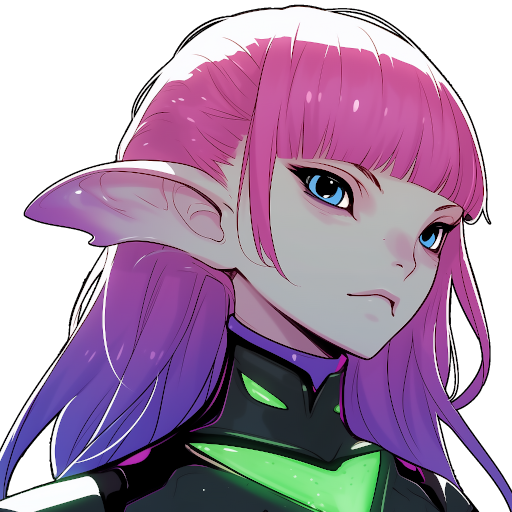
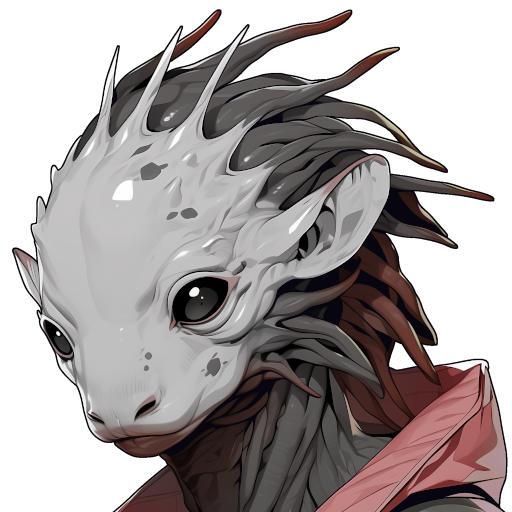


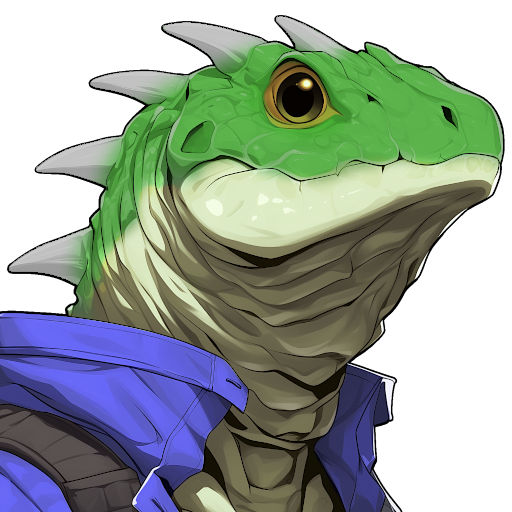
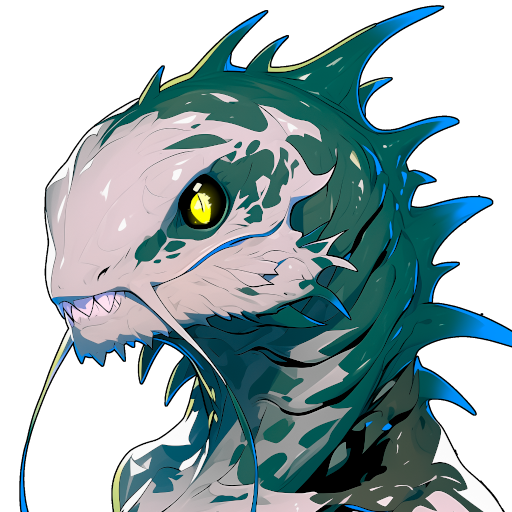
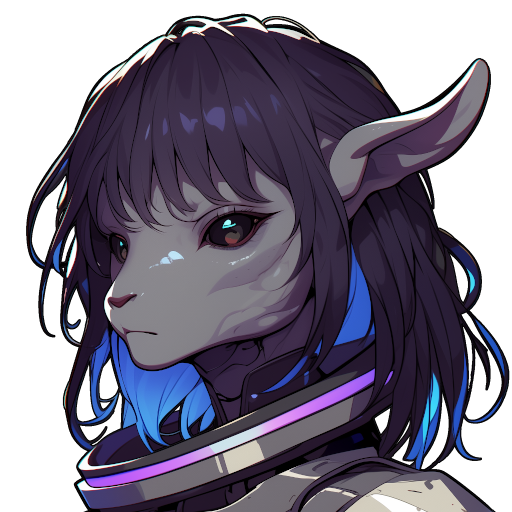
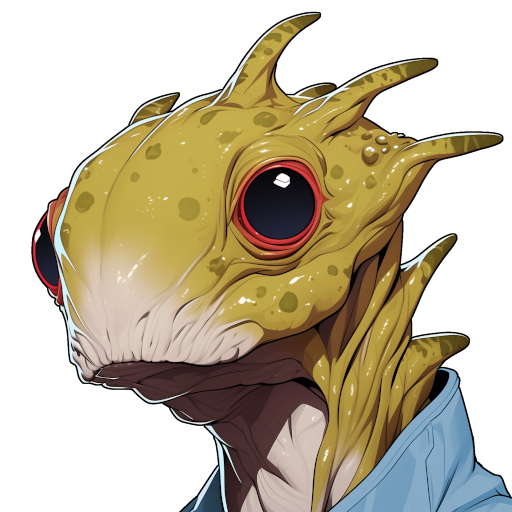

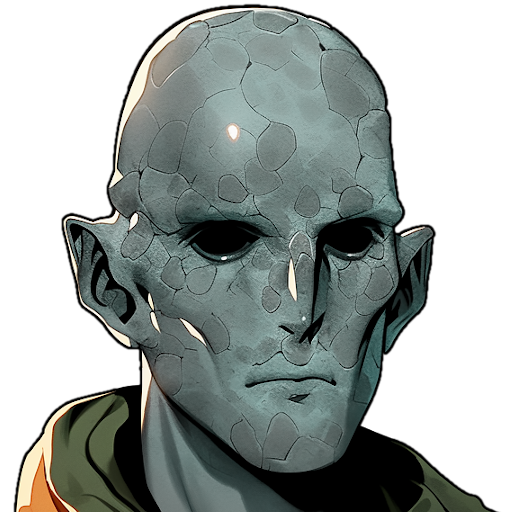


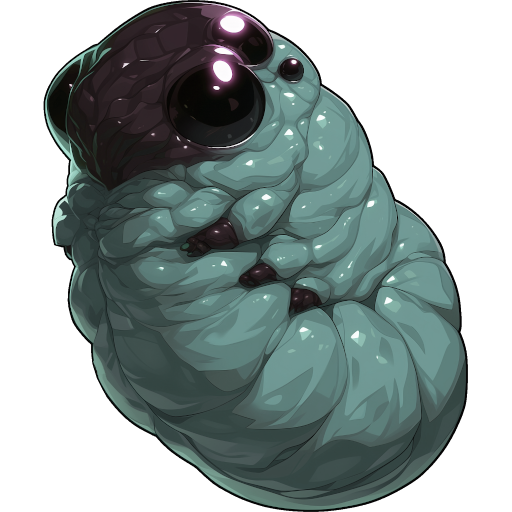
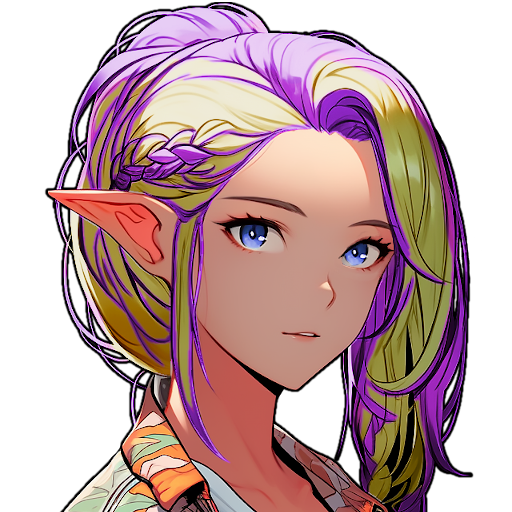

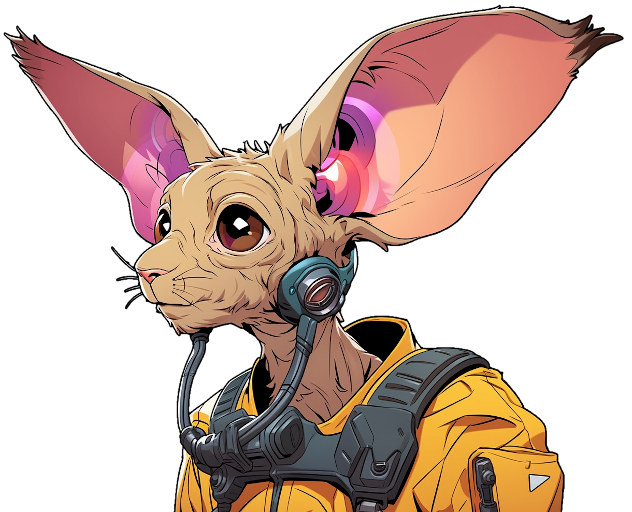
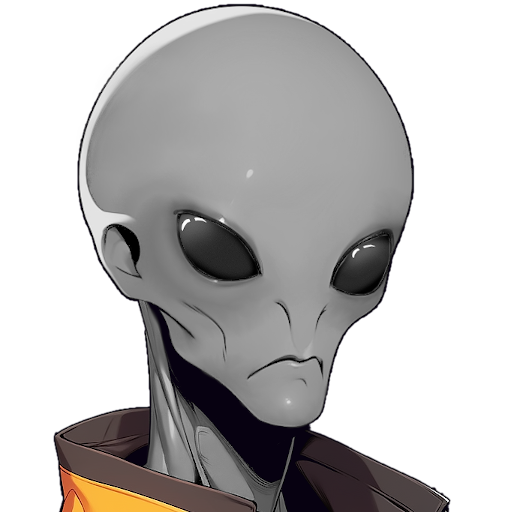

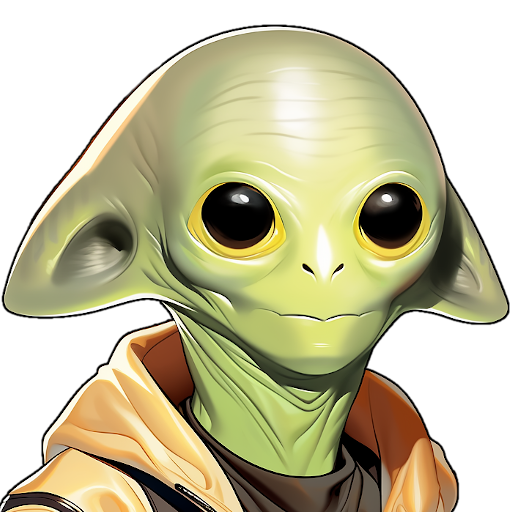


Another great one! I like the redacted sections it gives a good feel on being in a database you aren't supposed to have full access to.